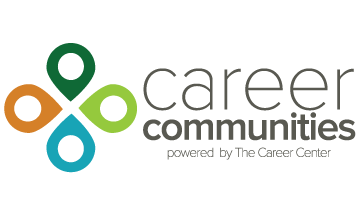Colleges and universities are turning to "career communities"—organized, clustered networks of alumni spread across different industries and fields—to serve their students' career needs at scales larger than ever before.
Colorado State University's Career Communities program is one shining example of the success of such a strategy. CSU's 15 career communities helps its 33,000+ students (and even more young alumni) find their way into the careers of their choosing.
Barb Richardson is Associate Director of Assessment & Strategic Initiatives at CSU's Career Center. We asked her to tell us how CSU has implemented its Career Communities program and made it a success.
What does the phrase “career communities” mean to you at Colorado State? Can you give us an overview of how you all have implemented career communities at CSU?
Career Communities for CSU is a moving definition right now! Originally, we defined them as online and in person career interest area communities of students, faculty, staff, alumni, and employers to connect people within insider information. Currently, we are working with this definition:
Career Communities is what we do, not what we have. Career Communities is a mindset to connect people in communities to provide industry-focused experiences. This framework teaches students the how and where to connect to an expansive network to gain insider information and advice necessary to support future aspirations. Career Communities is about gathering, connecting, and experiences.
We have implemented a number of things, some more successful than others, for Career Communities. One of our first steps was defining our communities, which we focused on Colorado and CSU relevant industries and we landed at 15 of those. Then, we purchased an online mentoring platform as a main entry point into Career Communities, and through that we provided regular communication to those that signed up.
We hired students as Community Specialists (eight the first year, five the second year), to help stimulate conversation and gatherings around the 15 Career Communities. We have integrated Career Communities into some of our events including Career Fairs as well as into our online resources in Ram Career Tools.
What do career communities help you do that other traditional approaches might not?
Our goal is that Career Communities will help us provide community to our students focused around career. People thrive when connected with others, and the traditional career center approach does not embrace that possibility.
Historically, career centers have provided advice and education from experts and events such as career fairs. However, when students are engaged in a community, they learn more, are more confident, and feel more supported. So our hope is to use a community approach to help students effectively gather information about their career interests by connecting with those that are in similar careers and/or industries, and experience the cultures of different industries (or communities).
How do you use technology and career communities together to reach CSU's broad student and alumni population?
Currently, we use our Career Communities platform but are also considering integrating Career Communities into all of our social media tools including Facebook, LinkedIn, and Twitter by using hashtags for the individual communities along with a general #csucareercommunities one.
What are the nuts and bolts of your career communities strategy? How many staff do you have assigned to each community? What benchmarks and metrics do you use for success?
Currently, each Community Specialist is responsible for stimulating the engagement of three communities. The other full-time staff in the Career Center integrate all of the Career Communities into their daily work.
While this is changing as we change the focus of our Career Communities initiative, we measure sign-ups and engagement on the platform and attendance as well as surveys at Career Communities events. Eventually we would like to measure outcomes related to securing plans after graduation as well. However, our main goal is to make Career Communities unavoidable to CSU students.
What advice would you offer to other institutions looking to emulate your success?
Our three lessons would be:
- Integration into your Career Center is key—it has to permeate everything you do and be everyone’s responsibility, not siloed into a particular team.
- Technology should only be a piece, not the driving piece, of your Career Communities initiative.
- Create communities that work best for your student population, mission of your university, and key employers.
Complete list of CSU's career communities:
- Animal & Agriculture
- Building, Manufacturing & Design
- Consumer Goods & Services
- Creative Arts & Design
- Education & Social Impact
- Entrepreneurship & Innovation
- Financial Services
- Food, Beverages, & Brewing
- Health & Recreation
- Hospitality & Tourism
- Law & Public Service
- Life Sciences & BioTech
- Marketing, Advertising, & Media
- Sustainability & Environment
- Technology, Information, & Computing

